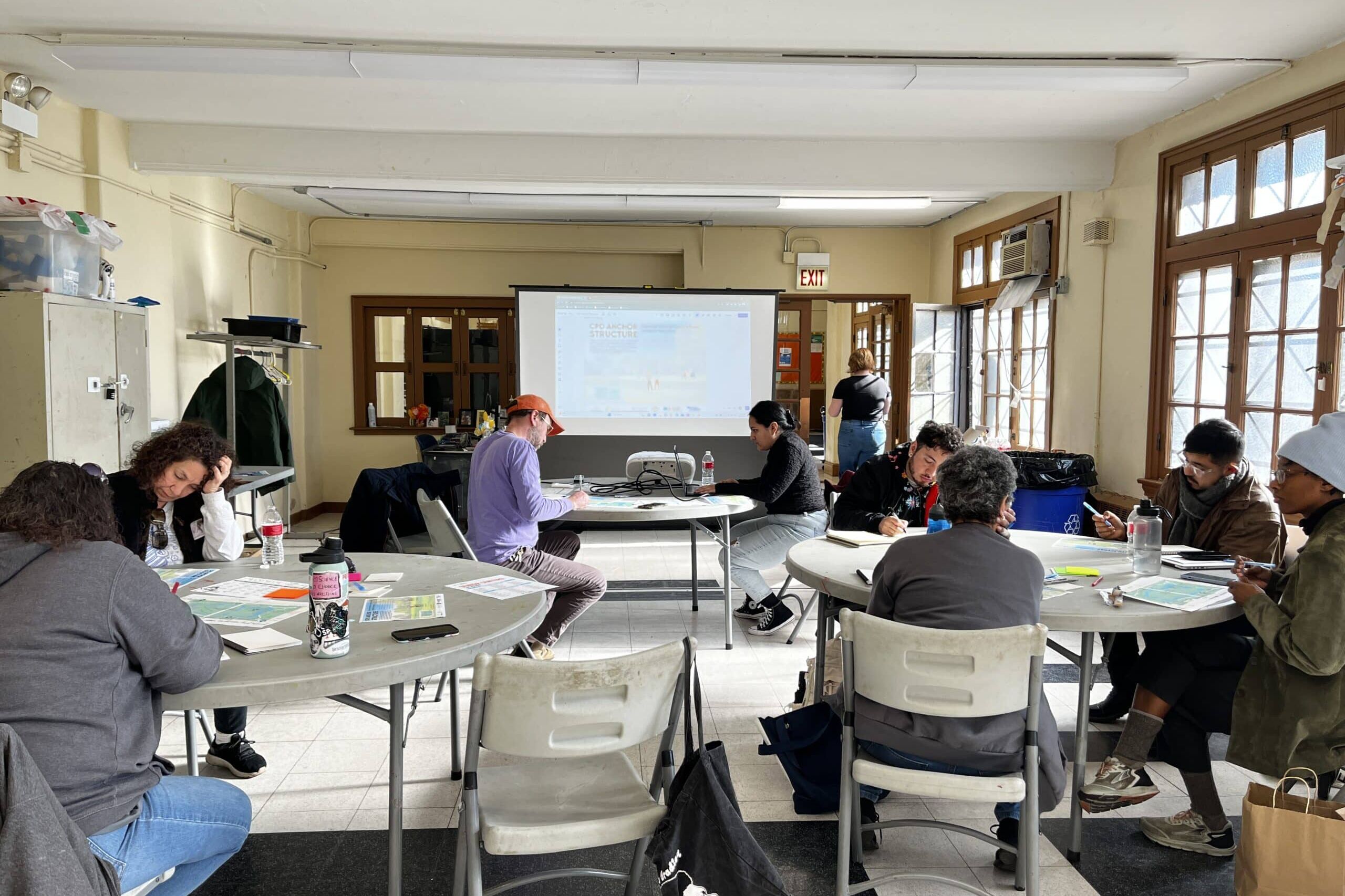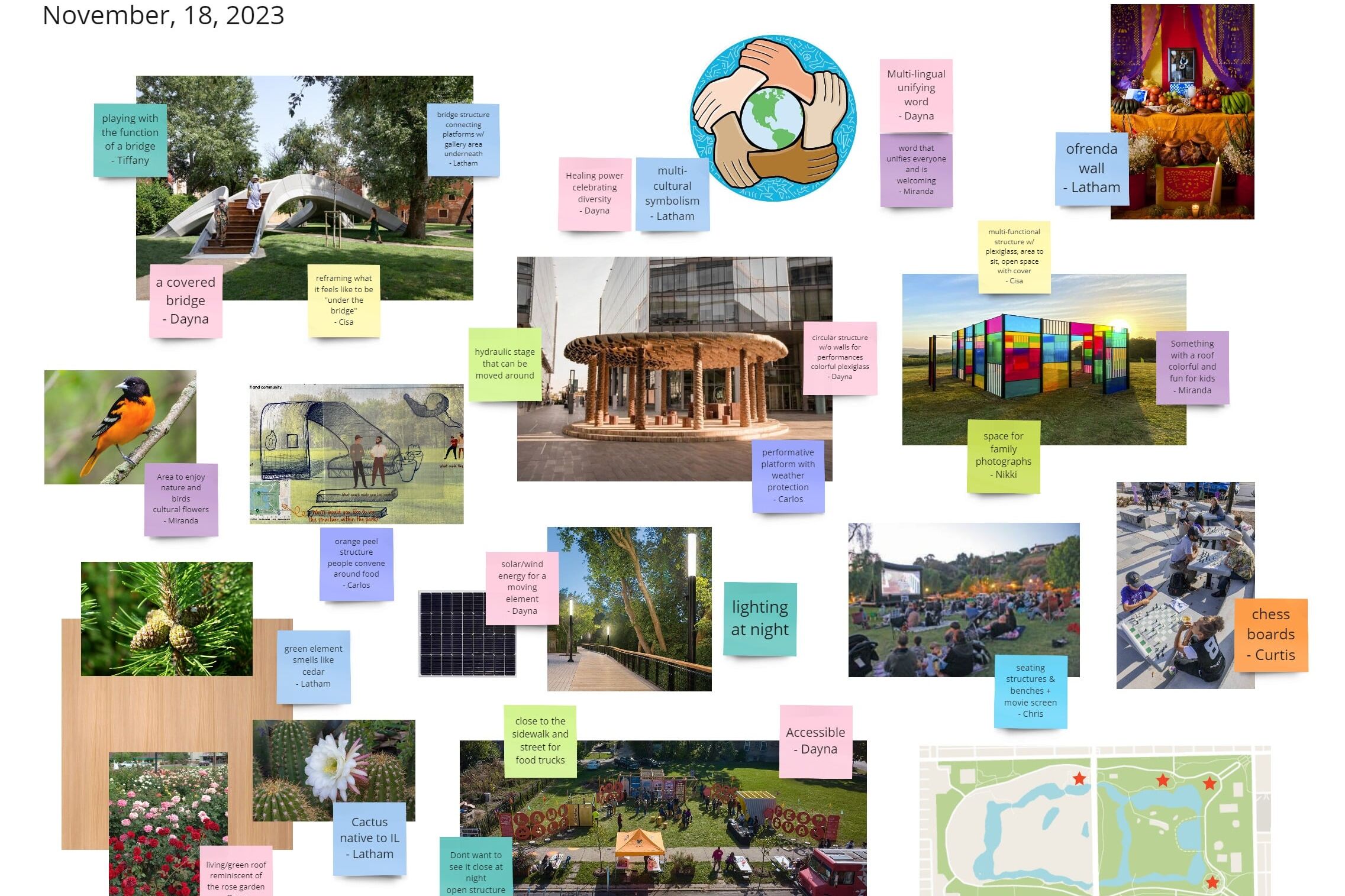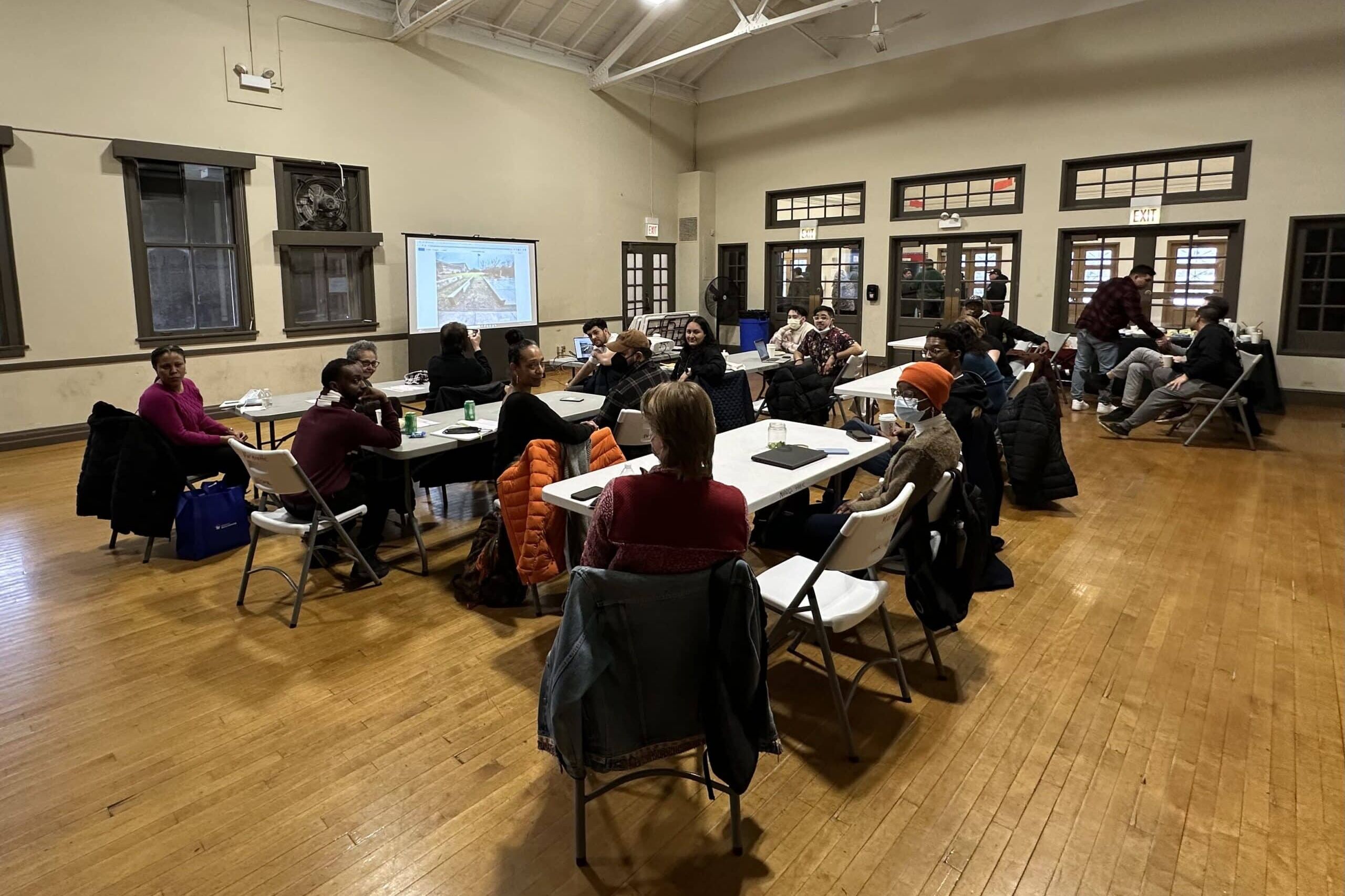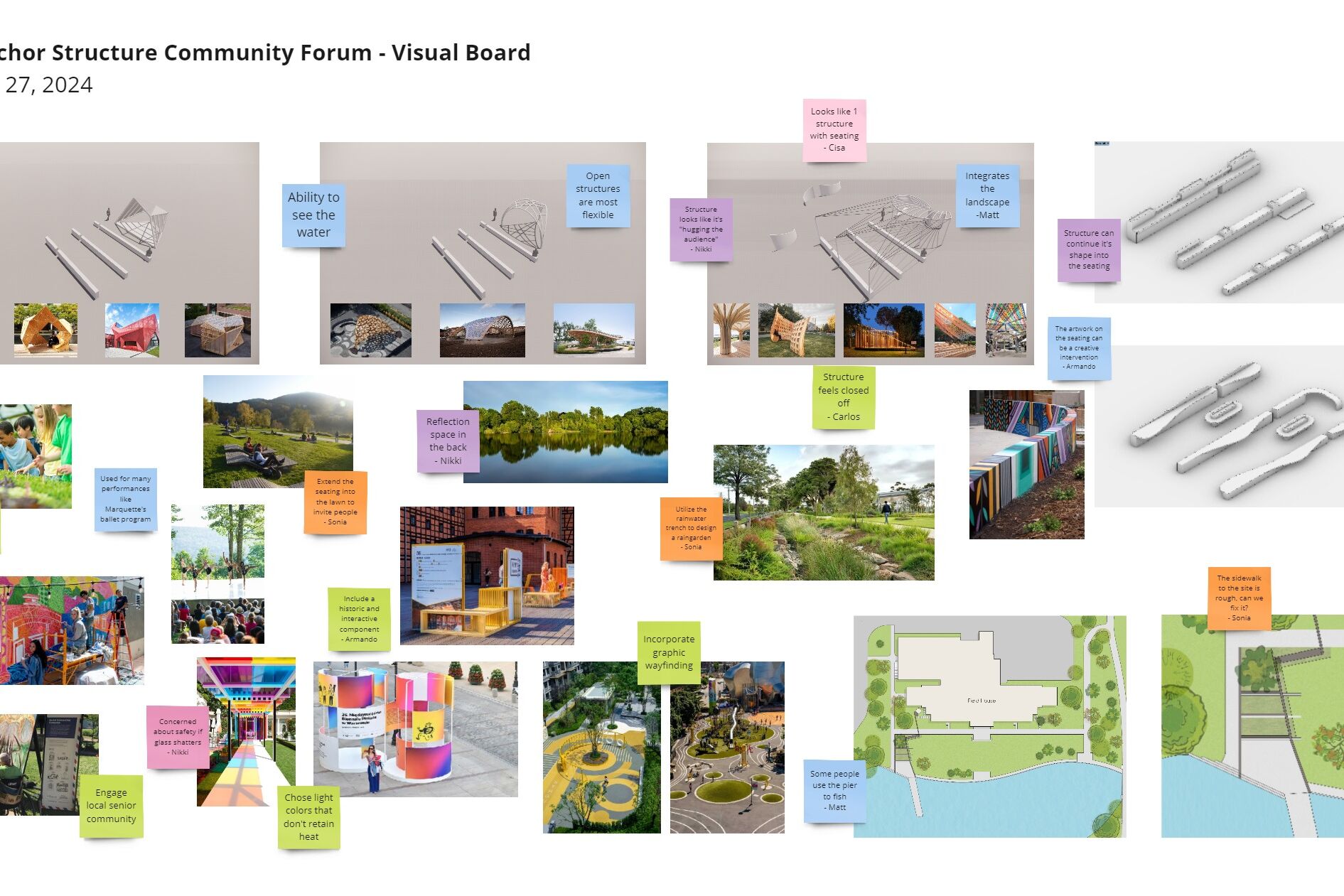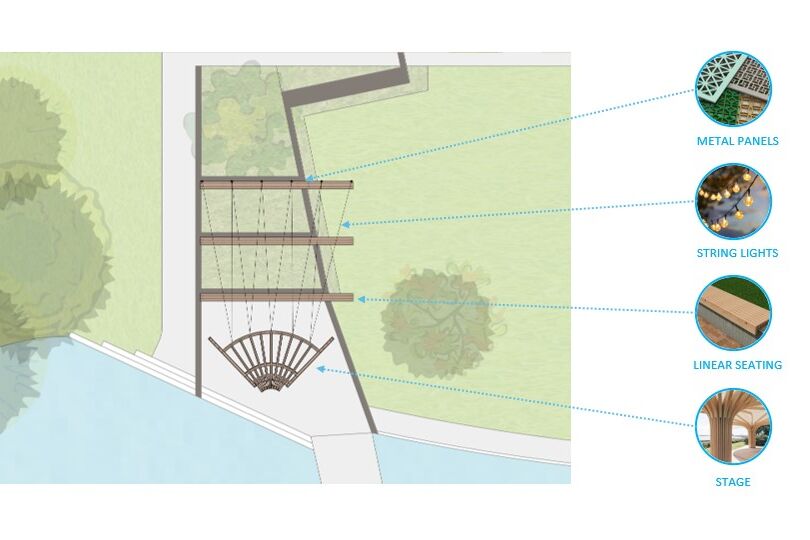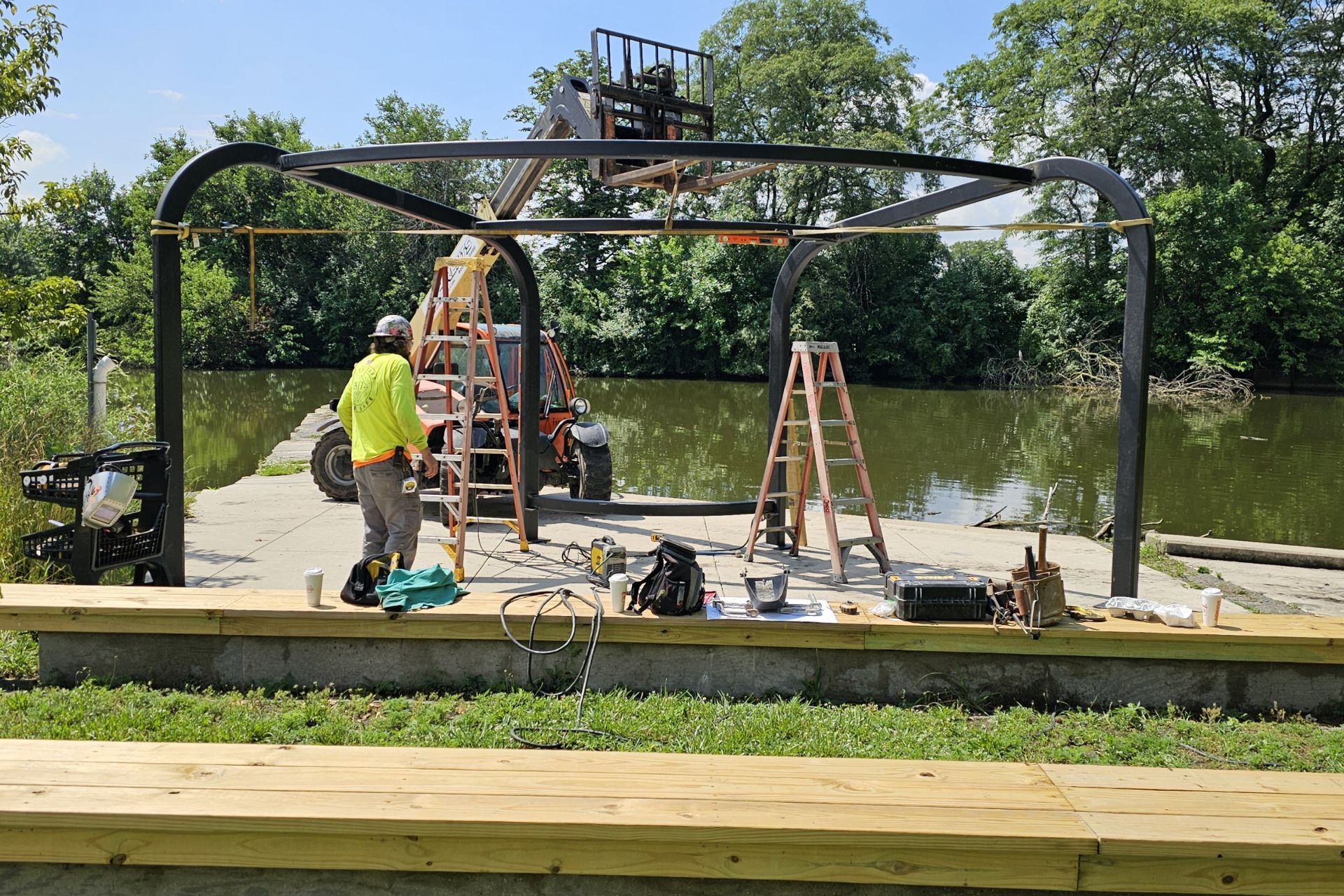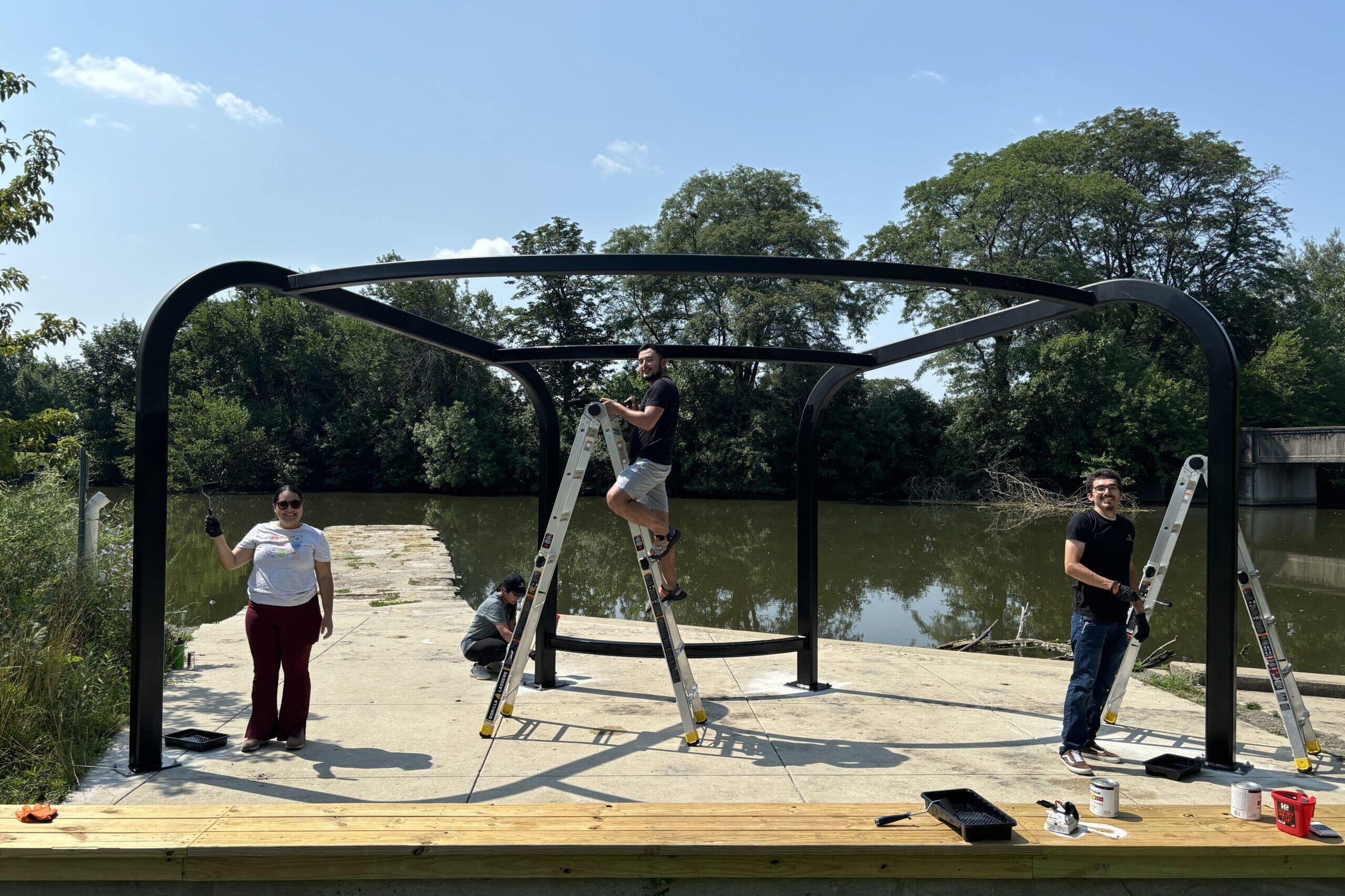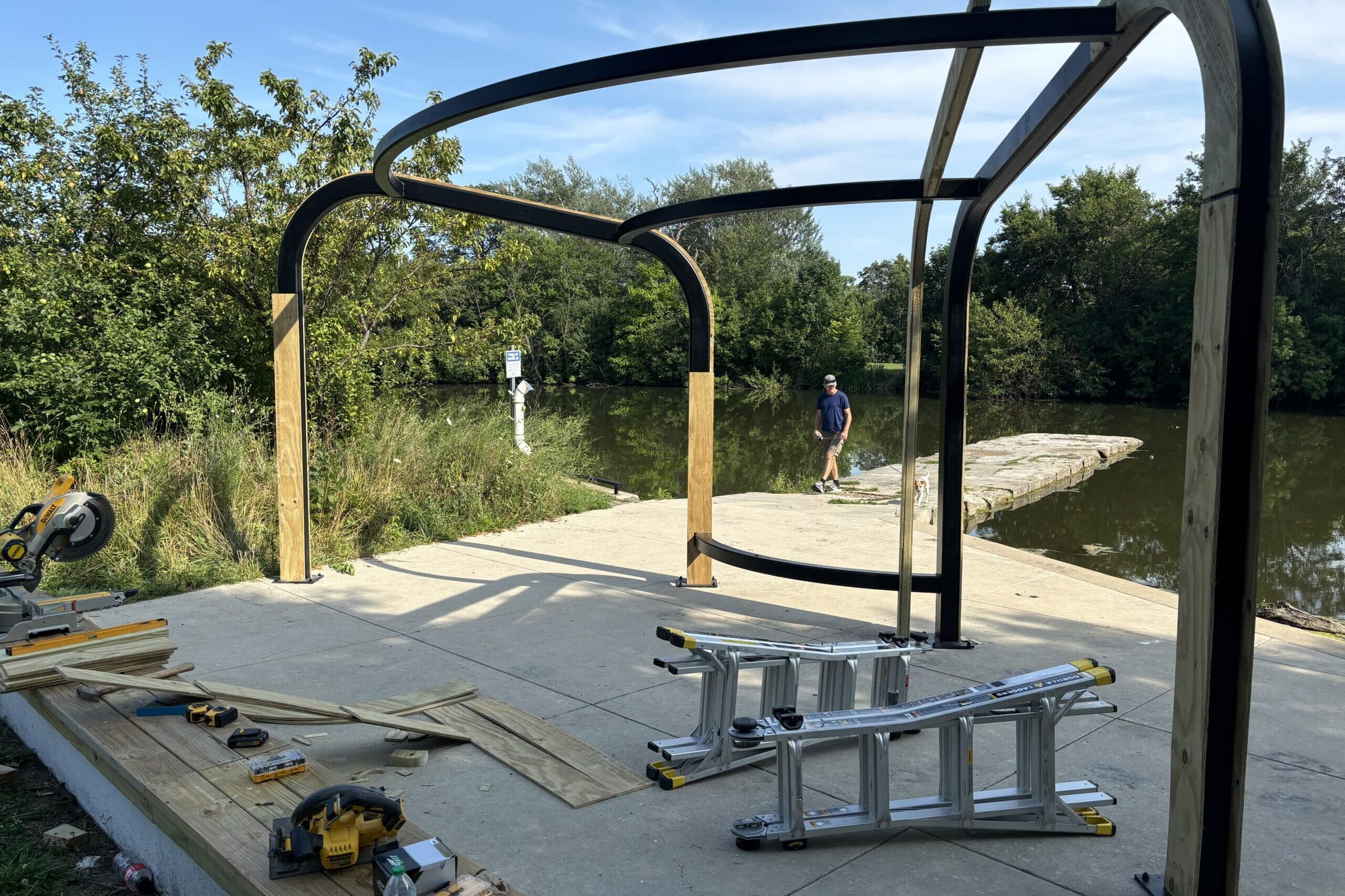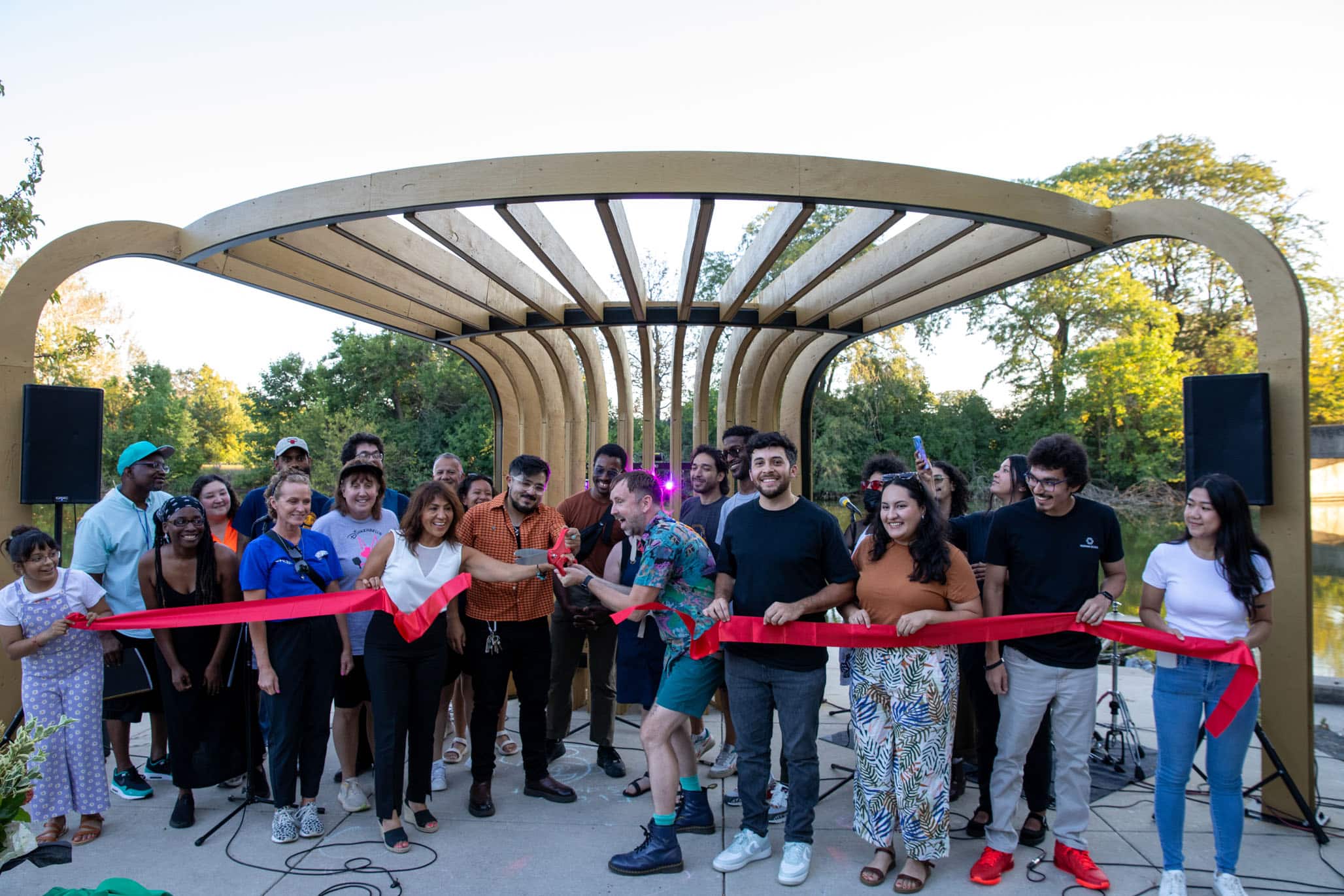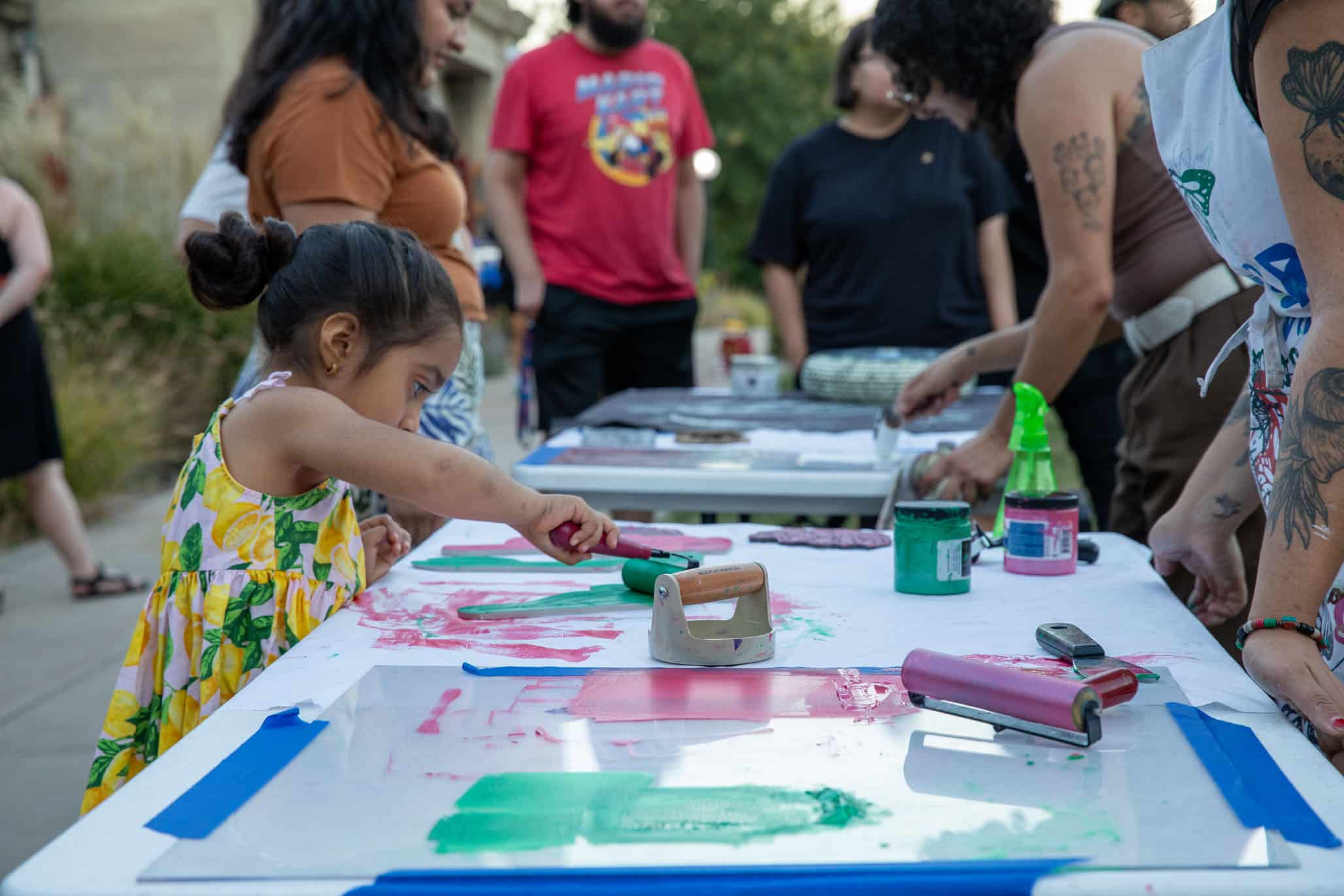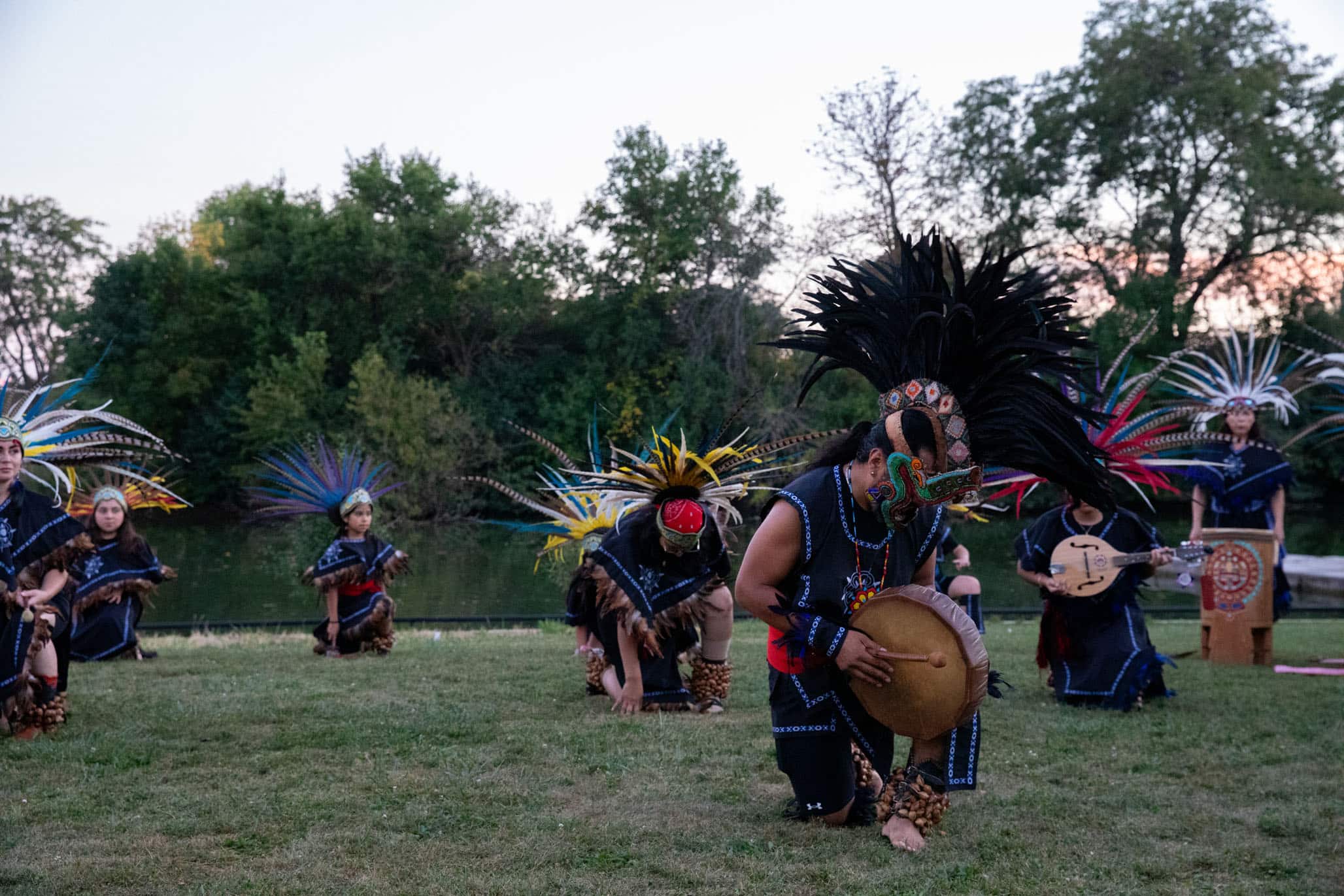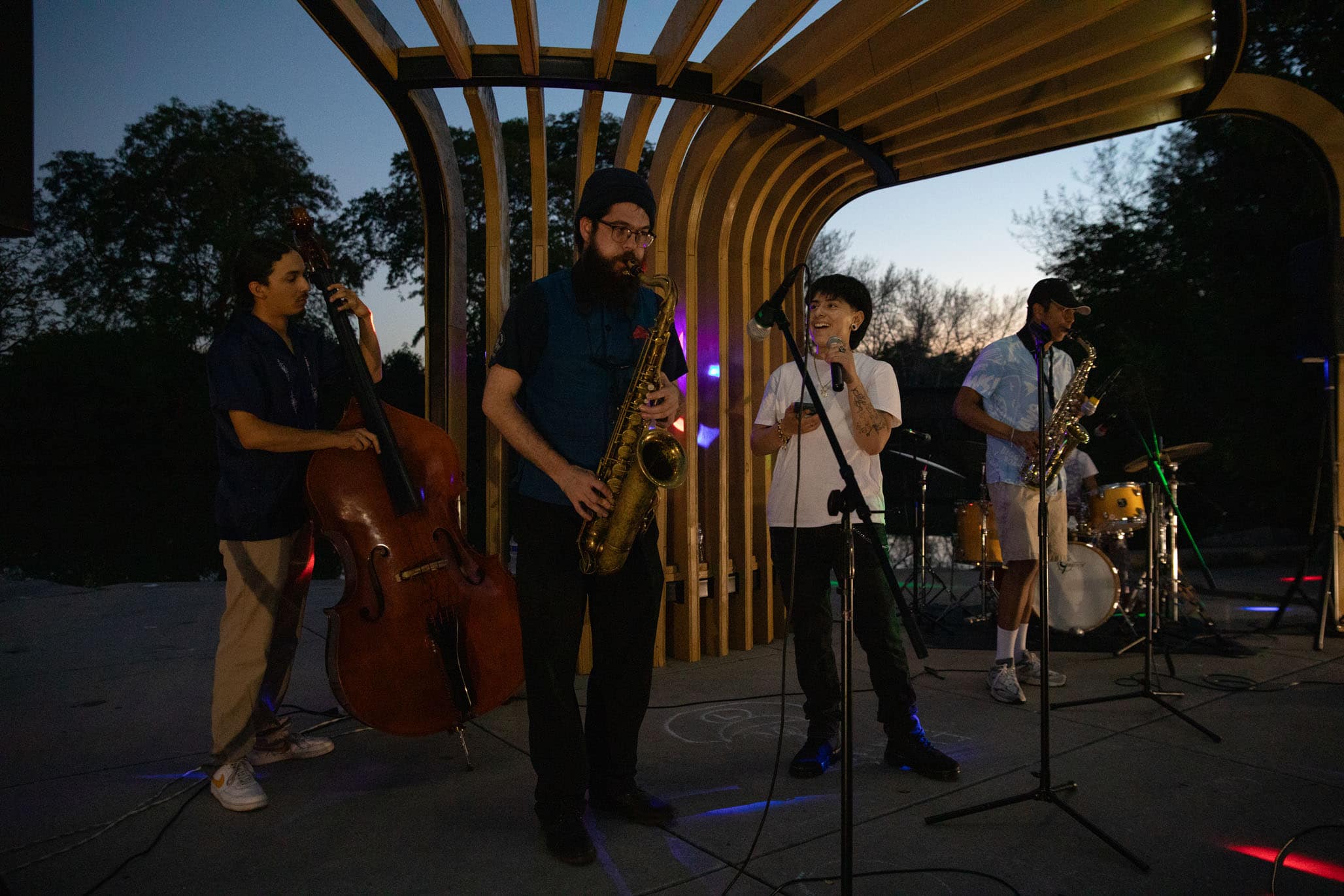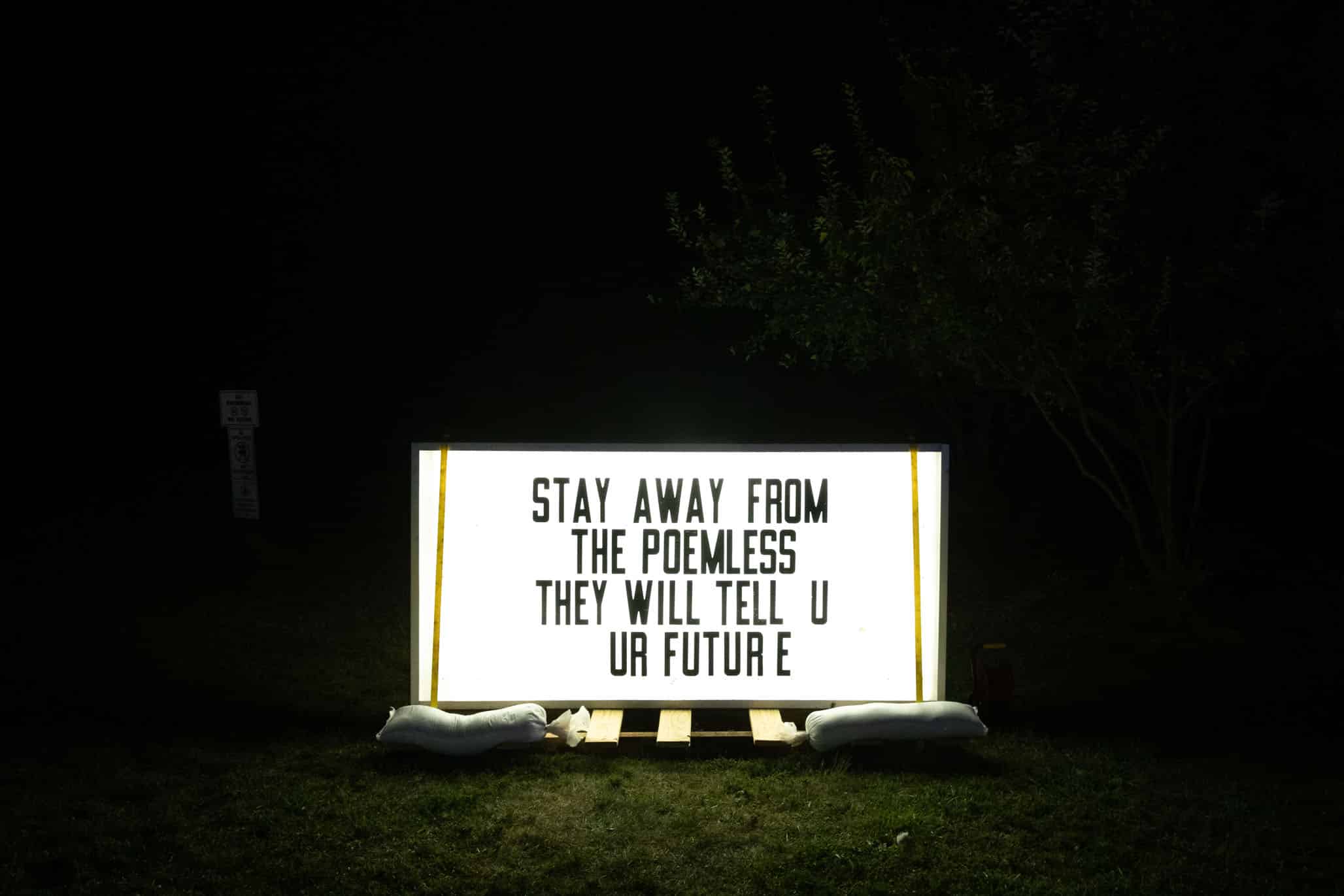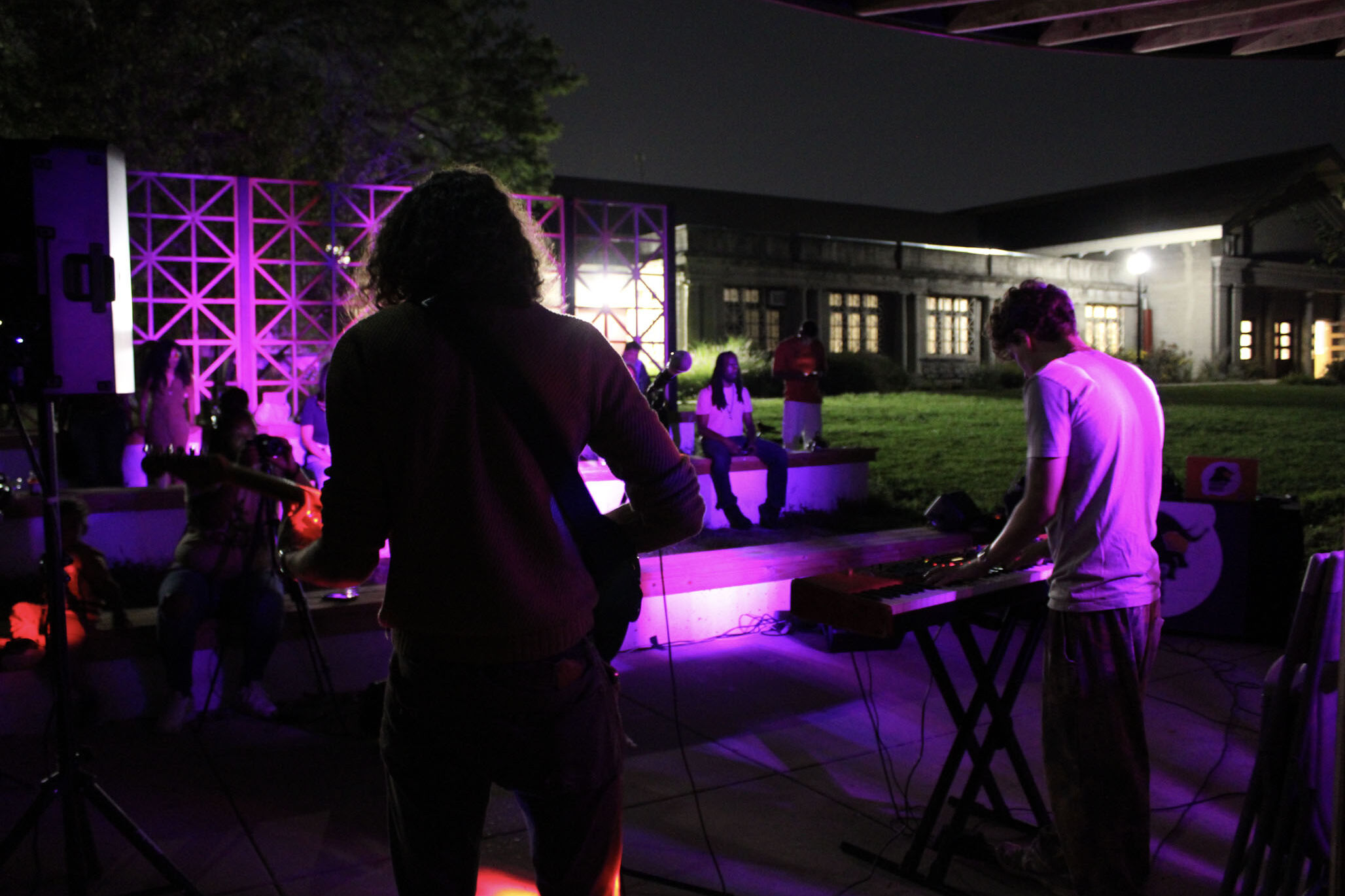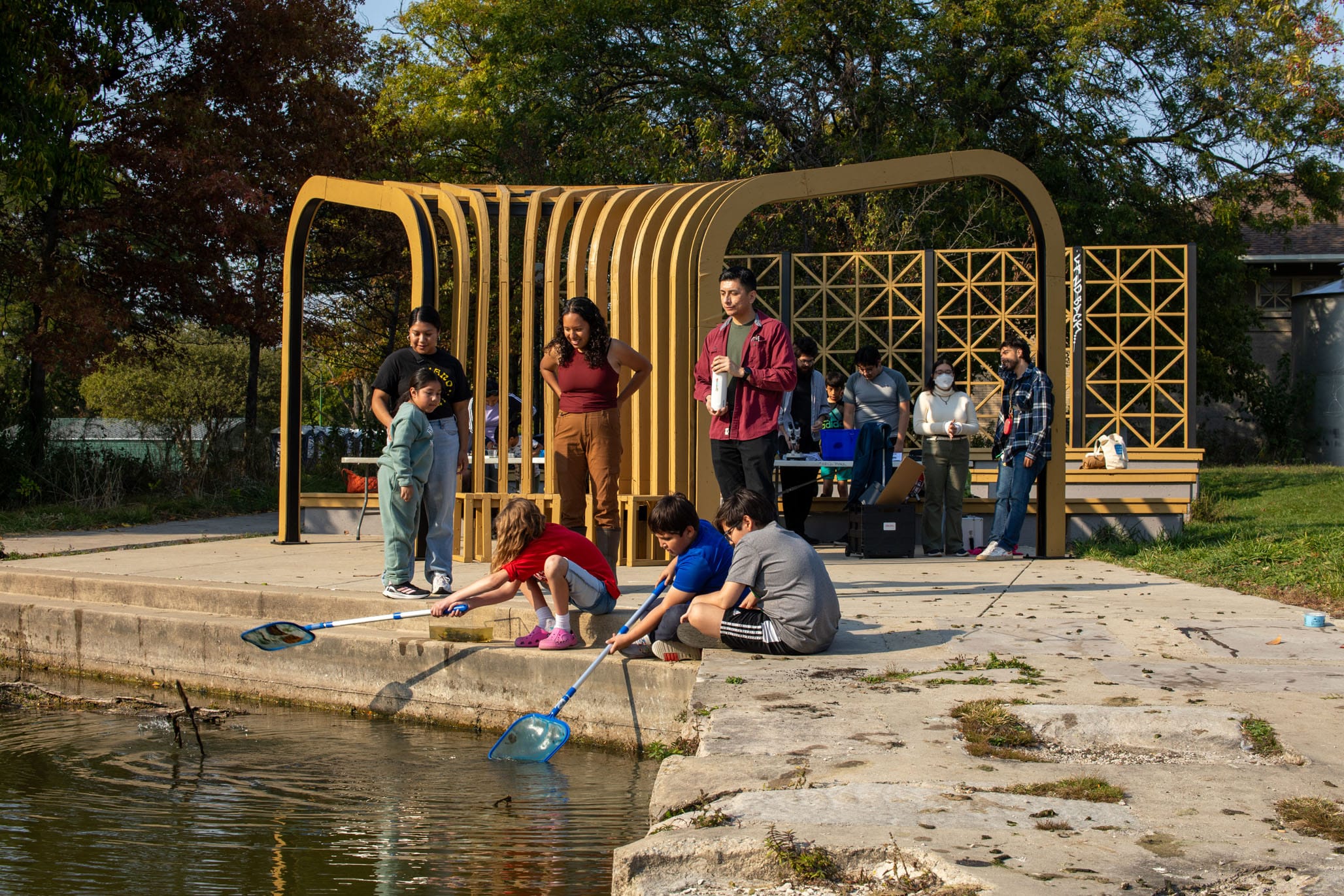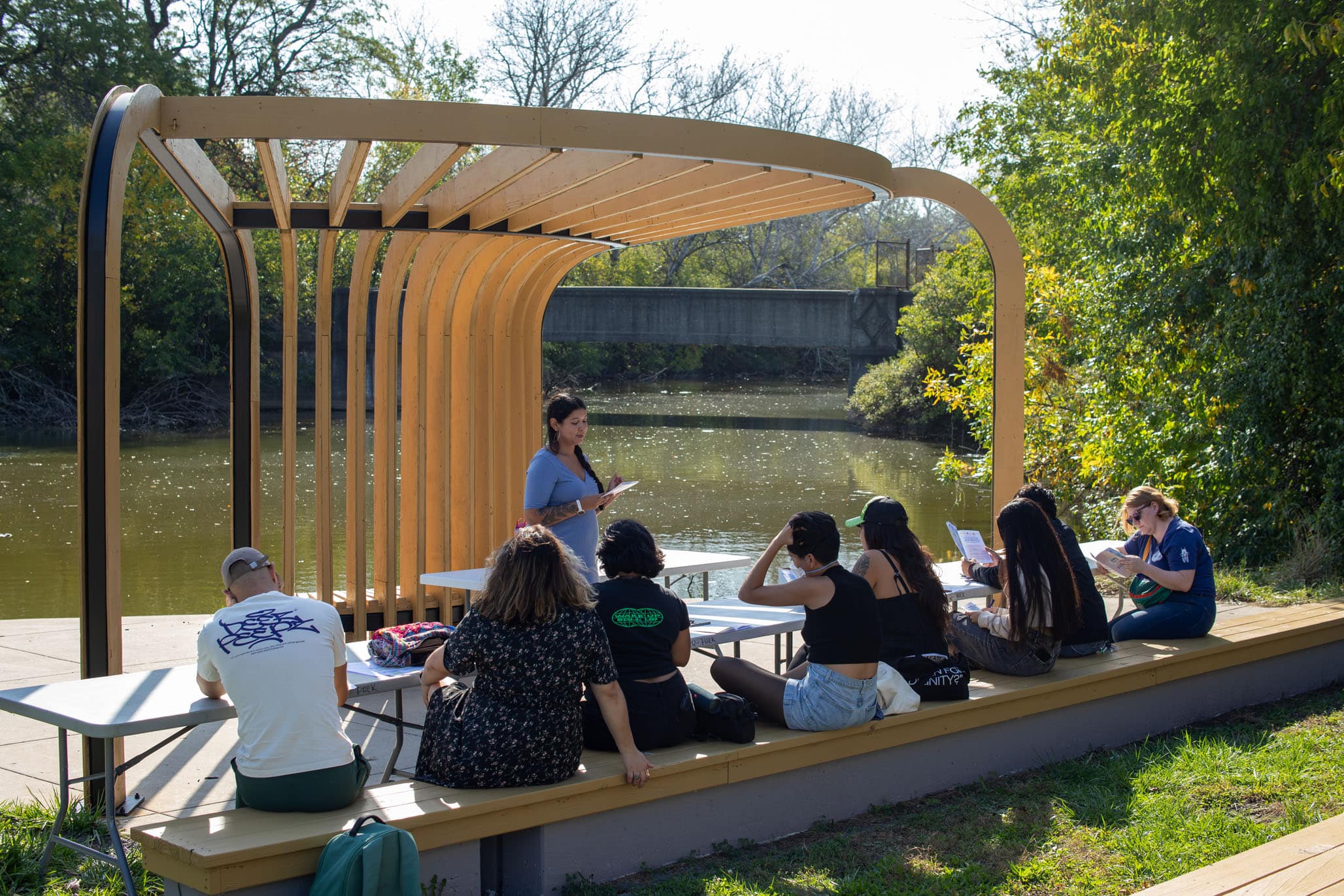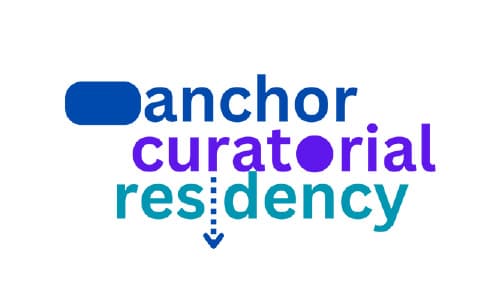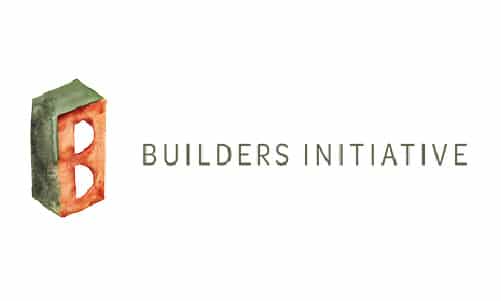The Anchor
LocationMarquette ParkBuilt2024ClientChicago Park District
“The Anchor at Marquette completely revitalized an underused area and opened up new possibilities for communal gathering”
- Latham Zearfoss, Cultural Liaison, Chicago Park District
NEED
In 2023, we partnered with the Chicago Park District’s Anchor Curatorial Residency program, an 18-month initiative culminating in a collaborative exhibition and site-specific structure at Marquette Park for the Fall of 2024. This residency engages artists and community members through a unique creative process aimed at deepening connections and building new relationships. Moving away from traditional art spaces, the residency is “anchored” by a commissioned outdoor exhibition and performance venue, designed in consultation with park staff and the community. Following the program’s successful inaugural rendition at Austin Town Hall in 2022 with curator Tiffany M. Johnson, the Park District sought to expand the program to other Chicago neighborhoods. For this second iteration, we collaborated with curator-in-residence Carlos Flores and the Marquette Park community.
GOALS
- Develop a multifunctional, creative, and accessible public pavilion for artistic expression
- Identify a strategic location within Marquette Park that is ADA accessible, has access to utilities and restrooms, and offers flexibility for various activities
- Explore adaptable design strategies that allow the structure to be reconfigured, relocated, or repurposed over time
- Foster a sense of ownership by involving local artists, residents, and community groups in the design and activation of the space
RESEARCH
Marquette Park, one of Chicago’s largest historic parks, was designed by the Olmsted Brothers in the early 20th century as part of the South Park Commission’s efforts to bring expansive green space to the city’s neighborhoods. Over time, the park served as both a gathering place and a site of social activism. In 1966, Dr. Martin Luther King Jr. led a fair housing march through the area, facing violent resistance as he advocated for desegregation. In
the 1970s, the park was the site of controversial neo-Nazi rallies, highlighting ongoing racial tensions. Today, Marquette Park remains a vital cultural and recreational hub, reflecting the evolving identities of the surrounding communities. The park’s layered history and shifting demographics inform the design approach for this project. By integrating public art, gathering spaces, and multifunctional structures, the installation acknowledges the park’s past while creating an inclusive and welcoming space for artistic and communal expression.
DESIGN DEVELOPMENT
BUILD
GRAND OPENING
BEFORE & AFTER

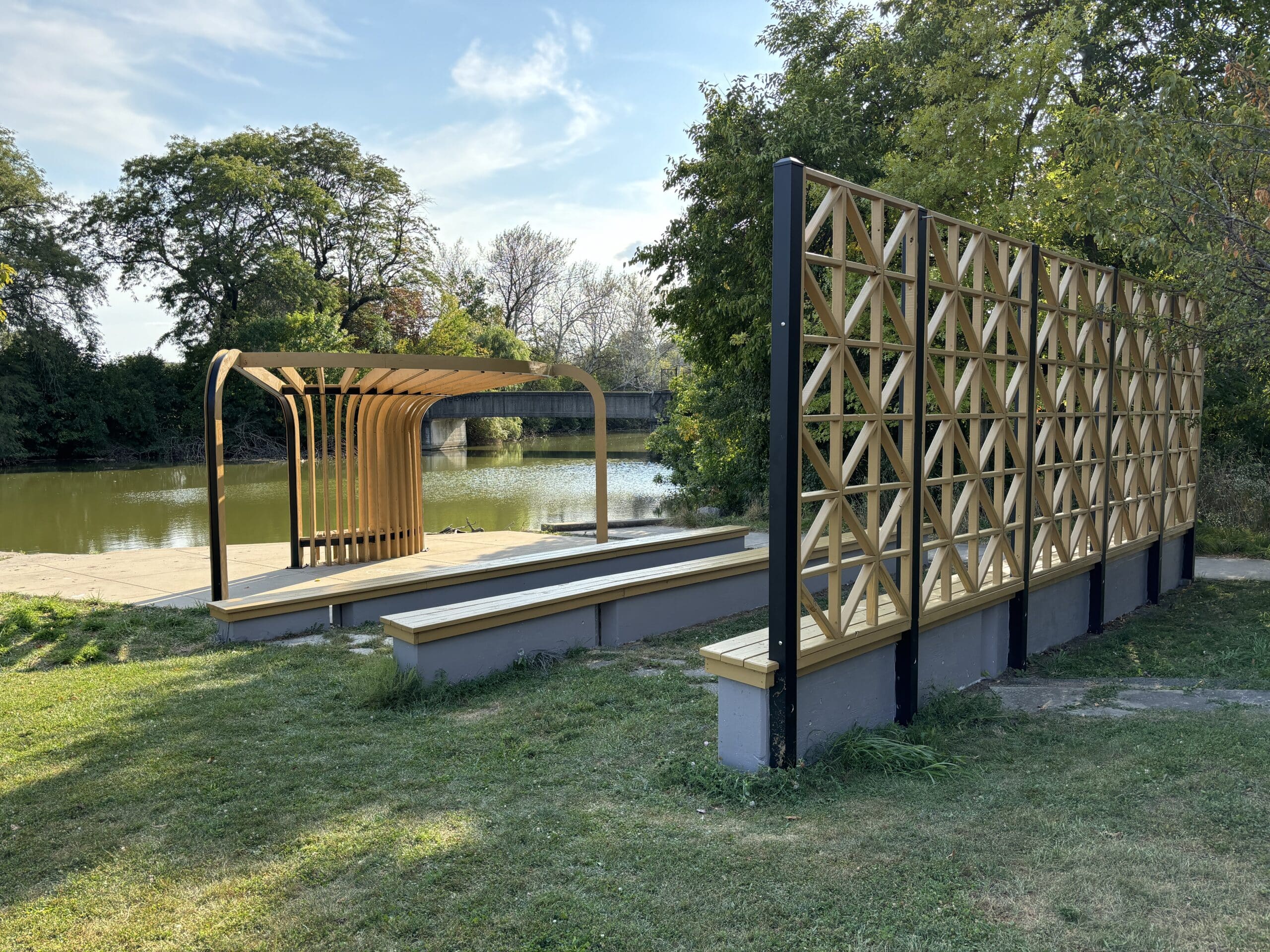
Features
- Outdoor stage that peacefully integrates into the surrounding water and landscape
- Rehabilitated linear concrete seating with wood tops
- Fishing dock viewing area
- Solar-powered lighting
- Wayfinding signage
- Decorate wall panels that mimic the existing field house’s windows

